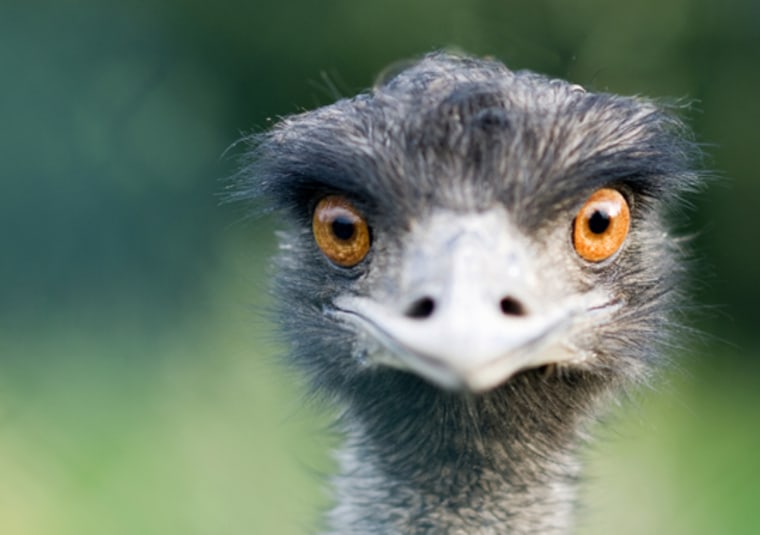Dinosaurs resembling ostriches on steroids ran through Early Cretaceous China around 120 million years ago, according to a new paper that describes one such 1,400-pound beast that had 6-inch-long hand claws and stood 10 feet at the hip.
The new dinosaur, Beishanlong grandis, could have been the world's largest "ostrich mimic." This was an unusual group of toothless-beaked, strong-legged dinosaurs that looked very similar to modern ostriches and omnivorously ate anything they could get their beaks and claws around.
"When I first saw the fossils I thought, 'This dinosaur is much bigger than it should be,' so it took a while to identify, but it's really cool," project leader Peter Makovicky told Discovery News.
He and his colleagues discovered the dinosaur during an excavation at the southern part of the Gobi Desert near the ancient Silk Road city of Jiayuguan, Gansu Province, China.
Makovicky, curator of dinosaurs at Chicago's Field Museum, explained that "ostrich mimic" dinosaurs evolved from meat-eating species, but developed their small heads and toothless beaks to enable better chomping on available plants in their environment. This may explain the ostrich resemblance.
"It could be that there are only a limited number of evolutionary pathways that allow a carnivore to become an omnivore or herbivore," Makovicky said, adding that B. grandis likely "picked up lizards and small mammals, and also ate a lot of foliage, such as leafy ferns."
The ostrich connection to dinosaurs may even go right to the bone. In a separate study, Mary Schweitzer, a North Carolina State University paleontologist, analyzed other dinosaur remains, along with the bones of today's ostriches. She determined that certain portions of dino bones contained structures "that looked virtually identical to bone cells called 'osteocytes' seen among collagen fibers in the ostrich bone."
The recently discovered ostrich-like dinosaur is outlined in the latest Proceedings of the Royal Society B, which includes a second paper by the same team describing yet another new dinosaur, a tyrannosaur that was an early relative of T. rex. Named Xiongguanlong baimoensis, this carnivore weighed close to 600 pounds, possessed a skull greater than a foot and a half in length and was armed with over 70 teeth.
"If you are around 6-feet tall, and if you could have stood next to it, you would have looked right into its open mouth," Makovicky said.
"It was a predator of duck-billed and horn-billed dinosaurs," he added, but believes that "it was a flyweight when compared to T. rex." Nevertheless, it shows the early appearance of modifications for increasing bite forces that foreshadow hallmark traits of later tyrannosaurs.
Based on the anatomy of X. baimoensis and other early tyrannosaurs, it's now thought that T. rex and its closest relatives evolved their massive skulls from animals with long, slender snouts.
Both the giant ostrich-resembling dinosaur and the T. rex relative shared turf, but did not eat each other and were not in direct competition for the same prey. Together and with other findings, they provide evidence for a phenomenon called "gigantism," which led to big beasts like B. grandis and T. rex.
Makovicky explained that the general trend was for "dinosaurs to start out small and get big," but there were exceptions. For example, B. grandis "shot up in size quickly, but then smaller species evolved before big 'ostrich-mimics' started to appear again in the fossil record."
Birds today seem to be limited in size due to their bone structure and other adaptations for flight.
In addition to the two new species, Makovicky and his team excavated a treasure trove of other dinosaur fossils at the Gansu site, including "a small, single-clawed dinosaur and a handful of horned dinosaurs." The paleontologists are still analyzing the bones, so new dinosaurs from this part of China may be announced in future.
More on dinosaurs | archaeology
